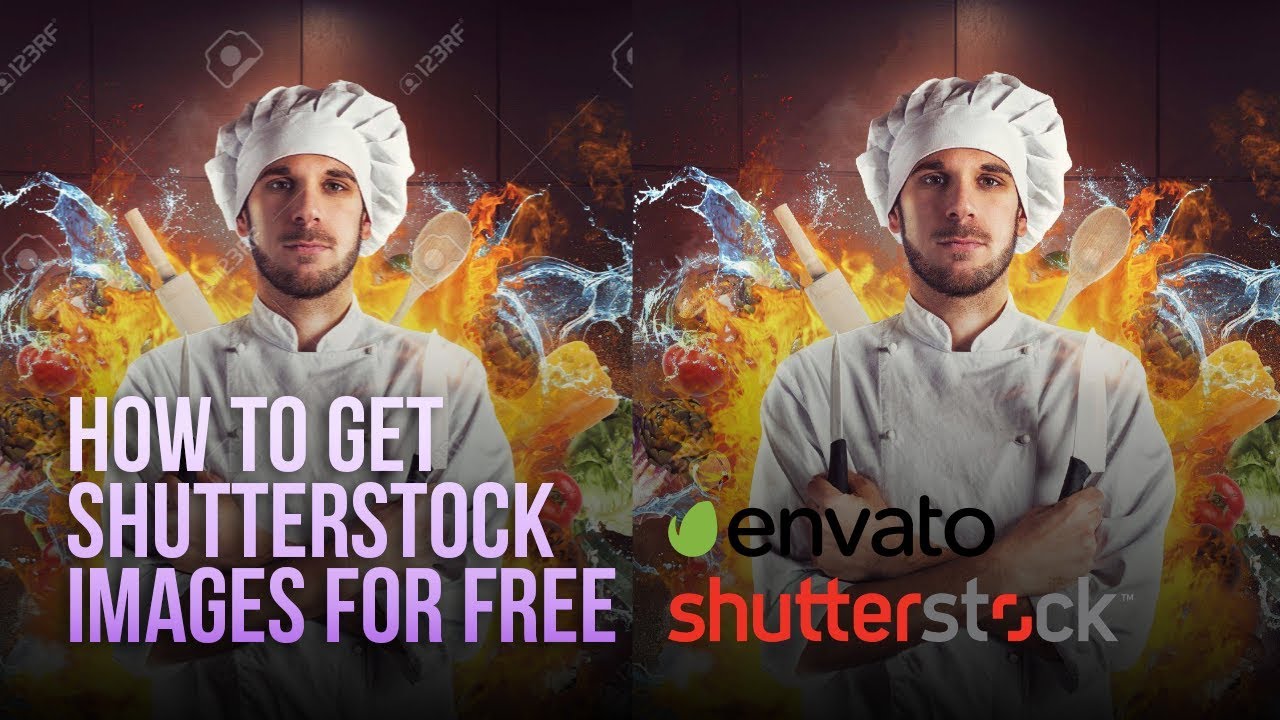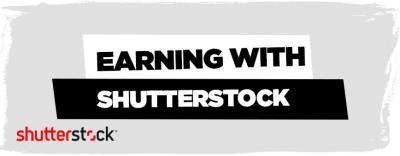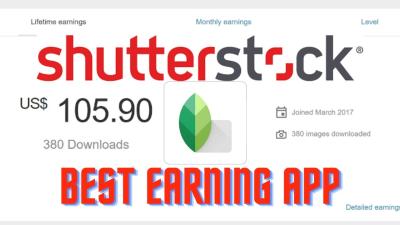Ever come across a stunning photo or an eye-catching video online and wondered where it came from? That’s where Shutterstock comes into play. It’s like a giant marketplace filled with millions of images, videos, and music clips, all ready for you to use—whether you’re a blogger, a business owner, or a creative professional. In this post, we’ll explore what Shutterstock is, how it works, and why it’s become a go-to resource for visual content around the world. If you’re curious about how digital media licensing works or just want to find the perfect image, keep reading!
What Is Shutterstock and Its Purpose

Shutterstock is a global provider of stock photography, footage, music, and editing tools. Founded in 2003, it has grown into one of the most popular platforms for high-quality digital content. Its main goal is to connect creators—photographers, videographers, musicians—and those who need content, like marketers, publishers, and website owners, in a seamless way.
Think of Shutterstock as a massive library or marketplace where you can browse through millions of assets to find exactly what you need. Whether you’re designing a website, creating a presentation, or making a commercial, Shutterstock offers a wide variety of media that can elevate your project. Instead of hiring a photographer or filming crew yourself, you can simply license an image or video from
The platform’s purpose is twofold:
- For Content Creators: It provides a platform for photographers, videographers, and musicians to showcase and sell their work globally. This way, they can earn income from their creativity and reach audiences they might not have access to otherwise.
- For Content Users: It offers a vast, easily searchable pool of high-quality media that can be licensed for various uses—commercial, editorial, personal—without the hassle of custom photoshoots or copyright worries.
Another key aspect of Shutterstock’s purpose is to simplify the licensing process. Instead of dealing with complex licensing agreements, users can select content, pay a fee, and get a license that clearly states how they can use the material. This transparency makes it easier for everyone involved—creators and users—to work confidently within legal boundaries.
In essence, Shutterstock acts as a bridge—inspiring creativity and streamlining content access—making it an essential tool for modern digital projects. Whether you’re a startup looking for eye-catching visuals or a seasoned marketer needing fresh content, Shutterstock aims to make your creative process smoother and more efficient.
How Shutterstock Operates for Creators and Customers

Understanding how Shutterstock works is key whether you’re a creator looking to share your work or a customer searching for the perfect image. At its core, Shutterstock is a platform that connects talented creators with businesses, marketers, designers, and anyone in need of high-quality visual content.
For creators, Shutterstock offers an accessible way to monetize your creative skills. You can sign up as a contributor and start uploading your photos, videos, illustrations, or vectors. Once your content is approved, it becomes available in Shutterstock’s extensive marketplace. Every time someone downloads your work, you earn a royalty. The amount depends on your contributor level, the type of content, and the licensing terms.
Shutterstock simplifies the process of earning from your creativity by handling licensing, payments, and distribution. Plus, the platform provides valuable tools like analytics to track your performance and insights on what buyers are looking for. This means you can optimize your submissions over time, increasing your chances of earning more.
On the flip side, customers—which include businesses, designers, marketers, and individual users—can browse Shutterstock’s vast library of images, videos, and other media. They often purchase content through a subscription plan or on a pay-per-download basis. Shutterstock makes it easy to find exactly what you need with advanced search filters, categories, and keyword tags.
Once a customer finds the perfect image or clip, they can quickly purchase a license, which grants legal permission to use the content in various ways—whether for commercial advertising, social media, website design, or personal projects. The licensing options are transparent, and Shutterstock ensures that users are protected with clear terms.
Overall, Shutterstock operates as a seamless marketplace, supporting creators in earning passive income and providing customers with a vast array of high-quality content. It’s a win-win system built on mutual benefit, with the platform managing the complex logistics behind the scenes.
Types of Content Available on Shutterstock
Shutterstock isn’t just about photos—it’s a bustling hub of various types of media that cater to a wide range of creative needs. Whether you’re a creator wanting to contribute or a buyer searching for specific content, you’ll find a rich diversity of options.
Here’s a quick rundown of the main content types available:
- Photos: The most common and popular category, featuring millions of high-resolution images covering everything from nature and business to lifestyle and abstract concepts.
- Videos: Short clips and cinematic footage that are perfect for commercials, social media, or website backgrounds. They come in various formats and resolutions.
- Vectors & Illustrations: Graphic vectors and illustrations are ideal for branding, infographics, and creative projects. They’re scalable and easy to customize.
- Icons & Graphics: Small, detailed images used for web design, apps, and UI/UX projects. These are often vector-based for flexibility.
- Music & Sound Effects: Audio tracks and sound effects that can enhance videos, presentations, or multimedia projects.
- Footage & 3D Models (on select plans): For more advanced projects, Shutterstock also offers 3D models and extensive stock footage libraries.
What makes Shutterstock stand out is its commitment to quality and variety. Whether you need a professional photograph for a magazine cover, a lively video for a social campaign, or a sleek vector for branding, you’re likely to find it here.
Additionally, the platform provides tools to preview, compare, and organize content efficiently. This makes the search process smoother and helps users find exactly what they need without hassle.
In summary, Shutterstock’s diverse content library supports a broad spectrum of creative projects. Its extensive range ensures that creators can showcase their talents across multiple media types, and customers can access everything they need in one place, making it a go-to resource for visual content worldwide.
Shutterstock Subscription Plans and Pricing Options
When it comes to accessing a vast library of high-quality images, videos, and other creative assets, Shutterstock offers a range of subscription plans designed to suit different needs and budgets. Whether you’re a small business owner, a freelance designer, or part of a large marketing team, there’s likely a plan that’s perfect for you.
Shutterstock’s subscription plans are typically divided into two main categories: on-demand image packs and monthly or annual subscriptions. Here’s a quick breakdown:
- On-Demand Packs: These are flexible options where you purchase a set number of images or assets upfront. They’re great if you need a few images sporadically without committing long-term.
- Monthly Subscriptions: Ideal for regular users, these plans offer a set number of downloads per month, with options typically ranging from 10 to 750 assets. You pay a fixed monthly fee and can download as many assets as your plan allows.
- Annual Plans: These often come at a discounted rate compared to monthly plans and require an upfront commitment for a year. They’re perfect if you have ongoing projects and need consistent access.
Here’s a simplified look at some typical pricing tiers (note that actual prices may vary based on your region and any ongoing promotions):
| Plan Type | Assets per Month | Price (USD) | Best For |
|---|---|---|---|
| Standard Monthly | 10-350 | $29 – $199 | Small businesses, bloggers, freelancers |
| Premium Monthly | 750+ | $199+ | Large teams, agencies, frequent users |
| On-Demand Packs | 20-350 images | $29 – $249 | One-off projects, occasional needs |
One thing to keep in mind: Shutterstock’s plans often include options for unlimited downloads (with certain restrictions) or pay-per-download models, so it’s worth exploring what suits your workflow best. Also, they sometimes offer discounts or extended plans if you’re planning long-term usage, so it pays to check their website regularly.
Benefits of Using Shutterstock for Your Creative Projects
So, why do so many creators, marketers, and businesses turn to Shutterstock? Well, there are quite a few compelling reasons that make it a top choice for sourcing visual content.
First off, extensive library. Shutterstock boasts millions of images, videos, music tracks, and vectors. Whatever your project needs—be it a professional business presentation, a lively social media campaign, or a stunning website—you’re likely to find something that fits perfectly.
Next, the quality assurance. Every asset on Shutterstock is curated and reviewed, ensuring you get high-resolution, professional-grade content. This saves you the hassle of editing or searching through low-quality options.
Another major benefit is the easy licensing process. Shutterstock’s licenses are straightforward, allowing you to use assets confidently across multiple platforms—whether online, print, or broadcast—without worrying about copyright issues.
Here are some specific advantages:
- Time-saving search tools: Their intuitive search filters help you find exactly what you need quickly, whether by color, orientation, image type, or even specific themes.
- Flexible licensing options: From standard licenses to enhanced options, you can choose the right level of rights for your project.
- Royalty-free assets: Most assets are royalty-free, meaning you pay once and use the content multiple times, which is great for budget management.
- Regular updates and new content: Shutterstock continually adds fresh assets, so your projects can stay current and relevant.
- Integration and tools: Shutterstock offers plugins for popular design software like Adobe Photoshop and Illustrator, making it easier to incorporate assets directly into your workflow.
Ultimately, using Shutterstock simplifies the creative process, giving you access to a professional and reliable resource that can elevate your projects, save you time, and ensure legal peace of mind. Whether you’re creating a social media post or designing a comprehensive marketing campaign, Shutterstock has the tools and assets to bring your vision to life.
How to Get Started with Shutterstock
Getting started with Shutterstock is pretty straightforward, and it’s a great way to access a vast library of high-quality images, videos, and music for your projects. Whether you’re a blogger, designer, marketer, or content creator, Shutterstock has something to offer. Here’s a simple step-by-step guide to help you begin:
Step 1: Create an Account
First things first, head over to the Shutterstock website and sign up. You can register using your email address or sign in through social media accounts like Google or Facebook. During registration, you’ll provide basic info like your name and preferred email address. Once you’ve confirmed your email, you’re ready to explore.
Step 2: Choose a Subscription or On-Demand Plan
Shutterstock offers various plans tailored to different needs:
- Subscription Plans: Ideal if you need a steady stream of images or videos each month. You pay a fixed fee for a set number of downloads.
- On-Demand Packs: Perfect if your usage is sporadic. You buy a pack of downloads upfront and use them over time.
Take some time to assess your needs and pick the plan that fits your budget and usage habits.
Step 3: Browse and Search
Once you’re set up, you can begin searching for assets. Use the search bar to type keywords related to your project. You can also filter results by media type, orientation, color, and more to narrow down your options.
Step 4: Preview and Download
Most assets can be previewed in full size before purchasing or downloading. When you’re ready, click on the download button. Depending on your plan, you’ll be able to download the asset immediately or after purchase. Remember, some assets might require licensing, so be sure to review the licensing details before using them.
Step 5: Use Your Assets
After downloading, you can use the assets in your projects, whether it’s a blog post, marketing campaign, or social media content. Just make sure to adhere to the licensing terms to avoid any legal issues.
Tips for Using Shutterstock Effectively
Using Shutterstock wisely can save you time, money, and help you create more impactful content. Here are some practical tips to get the most out of your Shutterstock experience:
1. Be Specific with Your Searches
Use detailed keywords to find exactly what you need. Instead of searching for “dog,” try “Golden Retriever puppy playing in the park.” The more specific you are, the better your results will be.
2. Utilize Filters and Categories
Take advantage of Shutterstock’s filters such as color, orientation, media type, and image size. This helps you quickly narrow down options and find assets that match your project’s style.
3. Save Your Favorites
As you browse, add promising assets to your favorites or collections. This makes it easier to compare options and access your preferred assets later without having to search again.
4. Understand Licensing Options
Shutterstock offers different licensing options—Standard and Extended. Make sure you select the right license based on how you plan to use the asset. For example, if you’re creating a product for resale, you might need an extended license.
5. Keep Track of Your Downloads
Organize your downloaded files in folders related to your projects. This saves time when you need to find a specific image or clip later.
6. Use the Editor Tools
Shutterstock provides basic editing tools for cropping, resizing, or adjusting images directly on their platform. Utilize these to tailor assets to your needs before downloading.
7. Regularly Check for New Content
Content is added daily, so make it a habit to revisit Shutterstock for fresh assets that might fit your upcoming projects better.
8. Respect Copyright and Licensing
Always ensure you’re using assets within the scope of your license. Misusing copyrighted content can lead to legal trouble, so review licensing terms carefully.
By following these tips, you’ll streamline your workflow, make smarter choices, and create more professional-looking content with Shutterstock. Happy creating!
Conclusion and Final Thoughts on Shutterstock
In summary, Shutterstock has established itself as a leading platform for high-quality stock images, videos, and music, making it an invaluable resource for creators, marketers, and businesses worldwide. Its extensive library, user-friendly interface, and flexible licensing options provide users with the tools they need to bring their projects to life efficiently. Whether you’re a seasoned professional or a beginner, Shutterstock offers a variety of subscription plans and pay-per-download options tailored to different needs and budgets.
One of the key advantages of Shutterstock is its commitment to quality and diversity. With millions of assets spanning numerous categories and styles, users can easily find the perfect visual or audio content to match their creative vision. Additionally, the platform’s robust search capabilities, including filters by orientation, color, and image type, streamline the process of discovering the right assets quickly. The contributor community also benefits from Shutterstock’s global reach, providing talented creators with opportunities to showcase their work and earn income.
While Shutterstock is a fantastic resource, it’s important to understand its licensing terms and usage restrictions to avoid potential legal issues. Always ensure you select the appropriate license for your project to stay compliant and respect creators’ rights. Overall, Shutterstock remains a reliable and versatile platform that continues to evolve, offering innovative features and expanding its content library to meet the dynamic needs of the digital age.
In conclusion, understanding how Shutterstock works and leveraging its features can significantly enhance your creative projects, saving you time and effort while ensuring professional-quality results.


